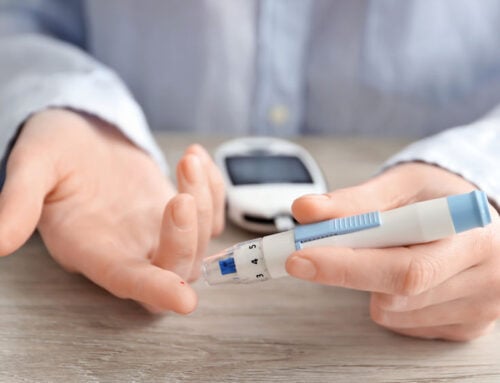How Diabetes Impacts Wound Healing
While most people with a wound can recover fairly quickly, the same can’t always be said of diabetics. Because diabetes is a condition that impacts the body’s ability to process glucose or sugar, there is a direct link to slow wound healing. A recent study found that patients with uncontrolled blood sugar had slower wound recoveries than patients with managed diabetes that experienced complete recovery.

Controlling blood sugar
Diabetes is a pervasive disease that can create a domino effect of symptoms and conditions if a patient fails to control blood sugar levels. Beyond an inability to process glucose in the blood, uncontrolled blood sugar can also increase a diabetic individual’s risk of developing vision problems that could lead to blindness. High blood sugar can strain blood vessels and pose a stroke or heart attack risk. Nerve damage can also occur, as can kidney failure. One of the most well-known diabetes-related complications is poor blood flow and nerve damage in the feet. In extreme cases, patients may suffer from foot sores that fail to heal, leading to amputation.
Wound healing in diabetics
Even when being careful, injuries can and do happen. Increased risk of poor wound healing, people with diabetes, should be more proactive regarding overall health to improve patient outcomes. People with diabetes should work with physicians to ensure that blood sugar levels are controlled and within optimal ranges. While some diabetics can focus on altering dietary choices, other individuals may need to incorporate medications to maintain healthy blood sugar levels. Once a patient has controlled blood sugar, other wound care tips can heal.
Change bandages frequently
With diabetes, leaving old bandages or dressings on injuries is a recipe for infection. Old bandages can harbor bacteria which can lead to slower healing. Especially if the wound or injury is on the foot, experts agree that keeping the foot covered with socks or shoes when walking around the house is a smart idea to prevent the risk of infection. Additionally, avoid placing too much pressure on the wound to aid in faster healing. Ironically, preliminary studies have found that using honey as a topical dressing for diabetic wounds can promote better healing.
Staying alert for better health
While there is no cure for diabetes, people with well-managed blood sugar levels can live healthy and productive lives. Along with maintaining routine wellness checkups, exercising, and eating a balanced diet, people with diabetes also need to be vigilant and take a proactive stance for managing injuries. Individuals with more questions about diabetes or wound healing and how the two issues are linked should speak with a physician.




